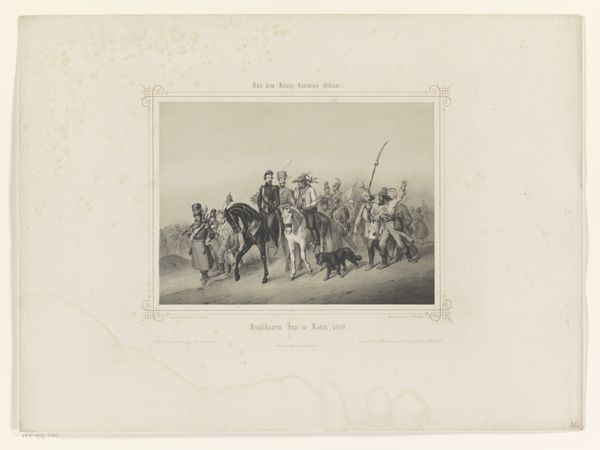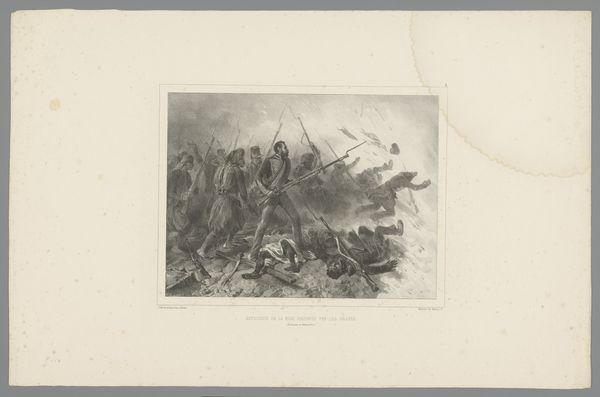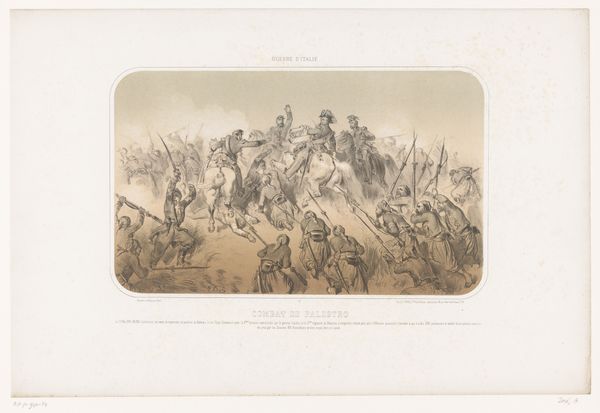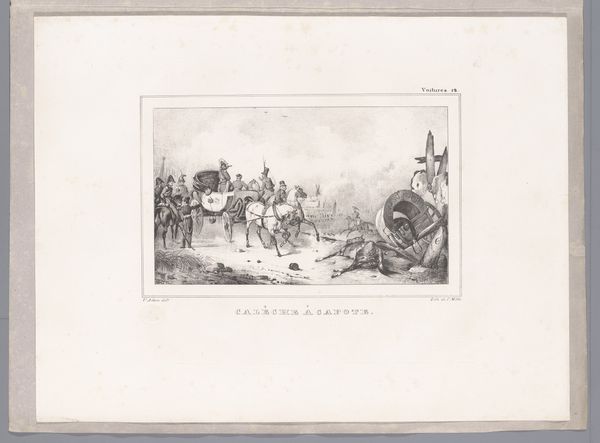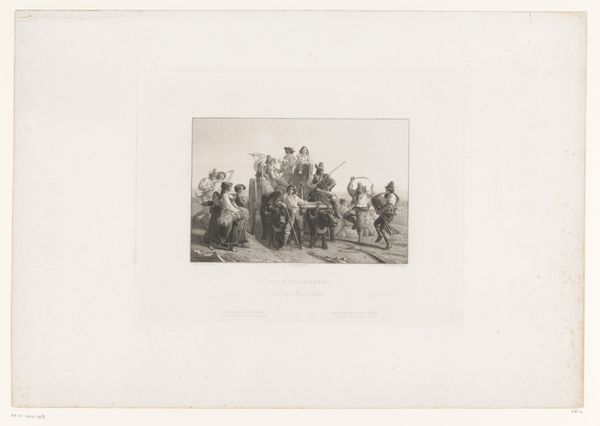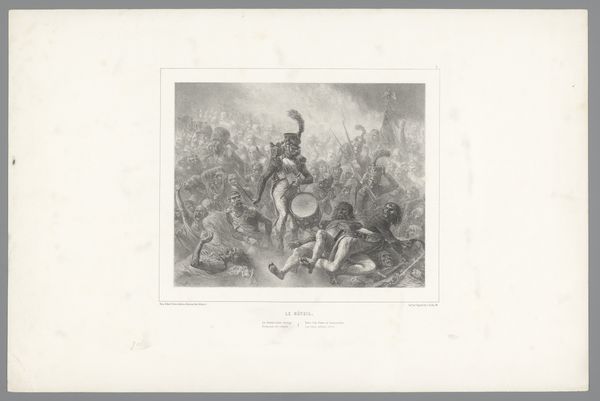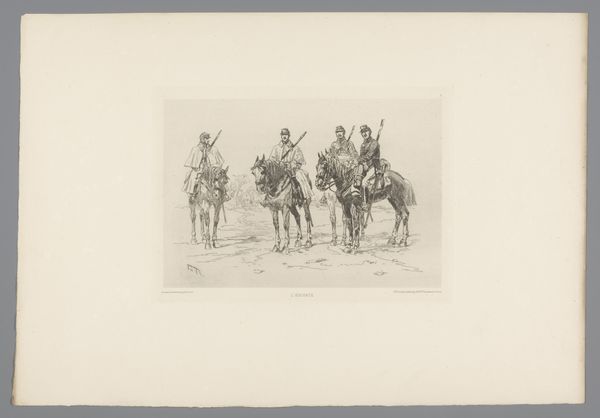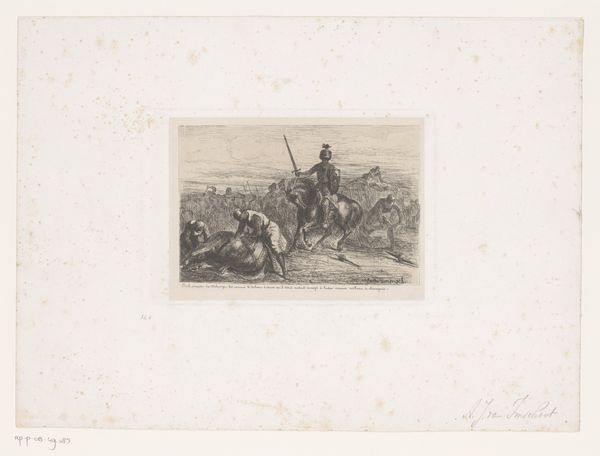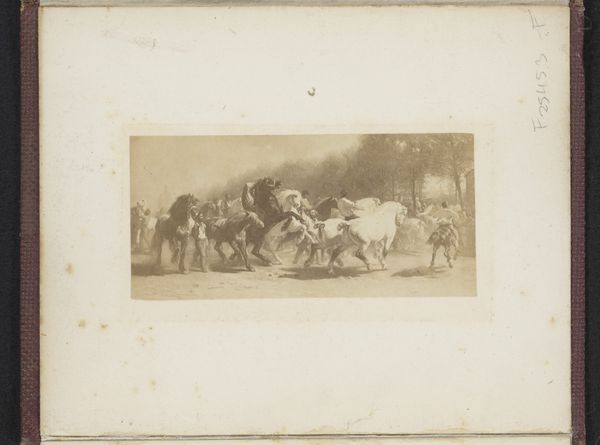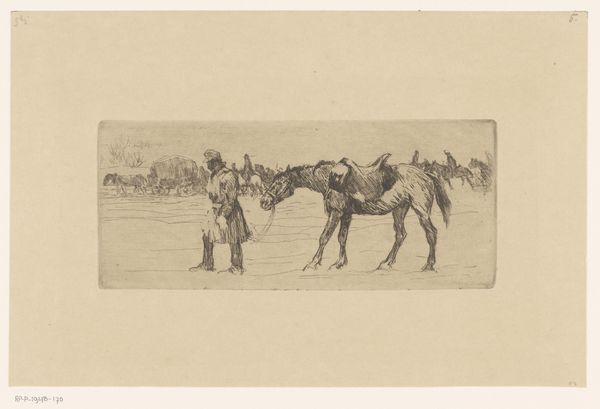
Fotoreproductie van het Alexandermozaïek uit het Huis van de Faun in Pompeï before 1879
0:00
0:00
giorgiosommer
Rijksmuseum
print, photography
#
narrative-art
# print
#
greek-and-roman-art
#
photography
#
ancient-mediterranean
#
history-painting
Dimensions: height 202 mm, width 254 mm
Copyright: Rijks Museum: Open Domain
Curator: At first glance, I see chaos, a frenzy of horses and soldiers rendered in sepia tones. It evokes a historical drama, but from a very distant, almost detached perspective. Editor: Precisely. This photograph, created before 1879, captures a reproduction of the Alexander Mosaic from the House of the Faun in Pompeii. The mosaic itself, of course, depicts the Battle of Issus, a pivotal moment in ancient history. Curator: So, it’s a copy of a copy, a representation removed by layers of time and medium. I find that intriguing. The power dynamics at play in its representation feel quite layered when thinking of intersectionality in its modern interpretations. The source, depicting conflict and power struggles of empires, viewed through a nineteenth-century lens... Editor: Exactly. We are seeing the rise of photo reproduction and mass dissemination of classical themes. What fascinates me is how the materiality of this print interacts with the grand narrative it portrays. Photography, still relatively new, takes on the task of translating the complex artistry of mosaic – a back-and-forth of process from stone to light. The labor inherent in the creation of both the original mosaic and this photographic print. Curator: Considering its context is crucial. We see an artifact created from a bygone empire captured by photography as a budding technology. We see not only a historical battle but its place in a complex dialogue on identity, war, and empire across centuries of meaning. Editor: And let’s not overlook how it also serves a commemorative function, a sort of document for historians of antiquity who maybe could not witness such a relic themselves. In considering its photographic reproduction we get an interesting intersection of art history and labor studies. Curator: True, seeing this work now underscores the responsibility of critically examining the layers of history, artistic expression, and ideology intertwined within it. What was the reason it needed replicating? How many audiences could enjoy it? Editor: Looking at it in terms of the labor involved and material production gives a better sense of the many dimensions these kinds of reproductions give to source material.
Comments
No comments
Be the first to comment and join the conversation on the ultimate creative platform.
